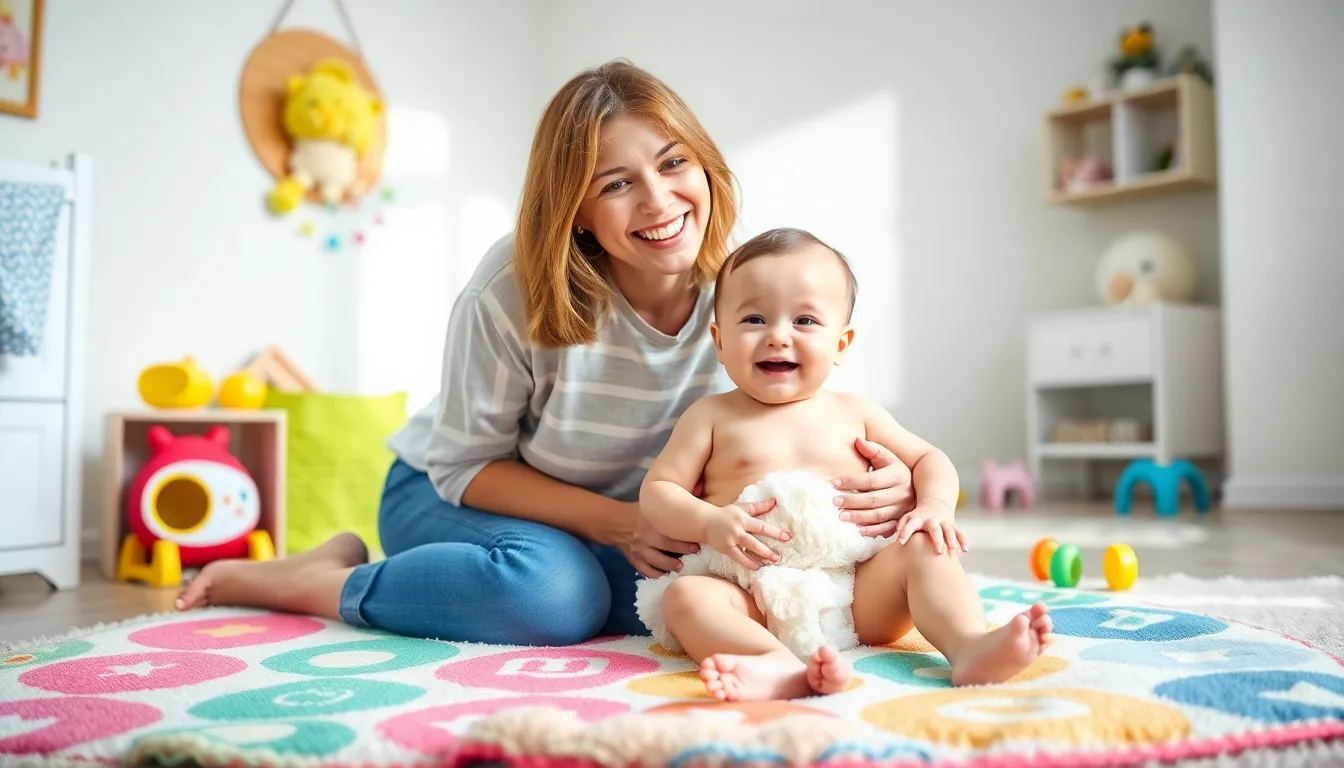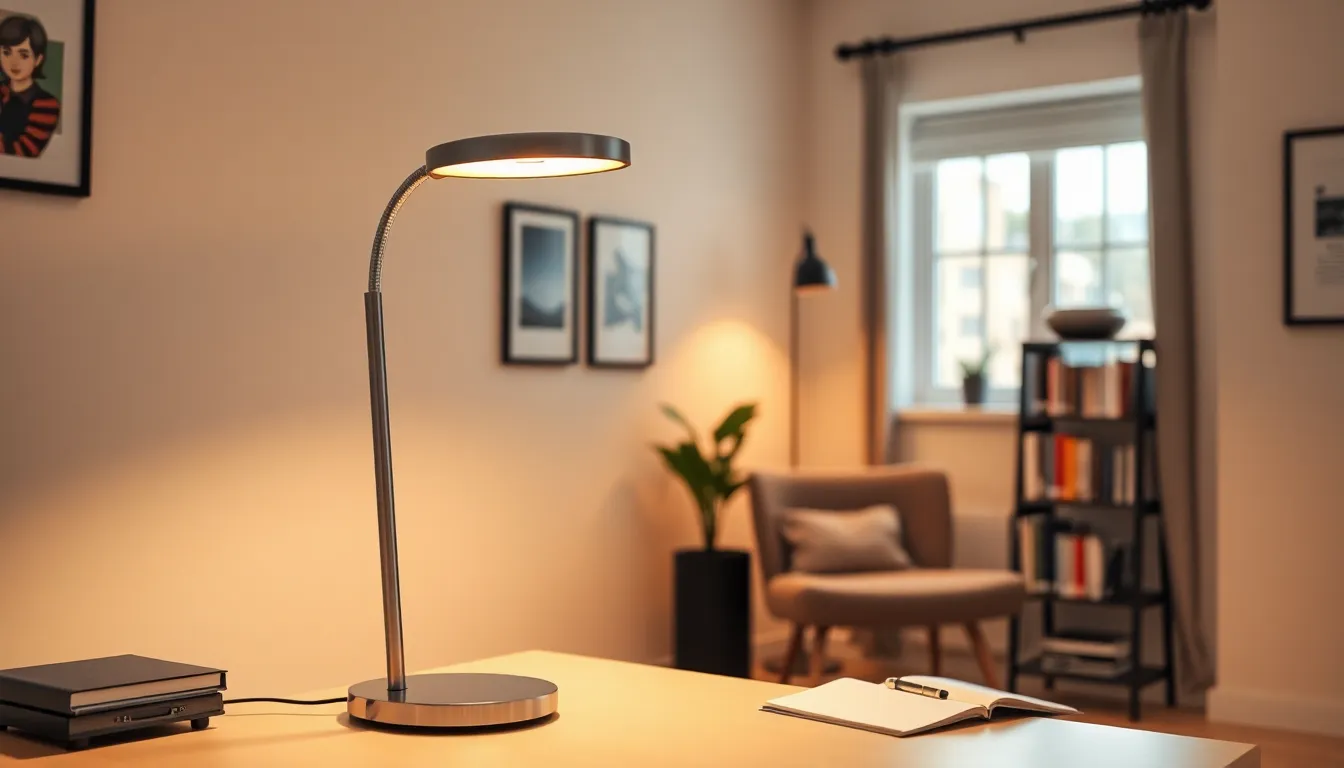Choosing the right diaper for a baby can feel like an Olympic sport. With countless options out there, parents often wonder which ones will keep their little ones dry and comfy without sacrificing safety. After all, no one wants to be that parent at the park with a diaper disaster on their hands.
Table of Contents
ToggleUnderstanding Diaper Safety
Safety plays a critical role when selecting diapers for babies. Parents aim to find options that combine comfort with effectiveness while minimizing potential risks.
Importance of Safe Diapers
Safe diapers contribute to overall baby health. They prevent skin irritation and rashes, keeping delicate skin protected. Quality materials ensure babies stay dry without exposure to harmful chemicals. Parents often rely on certifications to verify safety standards. Choosing brands known for transparency can further promote peace of mind. Overall, safe diapers facilitate healthy growth and development.
Common Concerns for Parents
Parents frequently worry about the materials used in diapers. Allergic reactions can occur due to certain chemicals or fragrances. Leakage issues also raise alarms, as they lead to discomfort and skin problems. Environmental impact is another pressing concern, with many choosing eco-friendly options. It’s essential for parents to ensure that any diaper selected meets safety regulations. Awareness of these common concerns can guide informed decisions, enhancing the overall diaper experience.
Types of Diapers

Different types of diapers exist, each catering to specific needs and preferences. Understanding these options helps parents choose the safest product for their babies.
Cloth Diapers
Cloth diapers consist of reusable fabric materials. Often made from cotton or bamboo, they offer breathability and comfort. Many parents appreciate cloth diapers for their eco-friendliness, reducing landfill waste. This option also allows for various styles, including pocket, all-in-one, and prefold designs. With proper care, cloth diapers can last through multiple children. They often contain fewer chemicals than disposable options, minimizing the risk of skin irritation. Cost savings over time make cloth diapers an appealing choice for budget-conscious families.
Disposable Diapers
Disposable diapers provide convenience for busy parents. Composed of absorbent gels and materials, they offer high absorbency levels to keep babies dry. These diapers often come with features like wetness indicators and stretchy sides for a secure fit. While convenient, parents should prioritize brands known for safe materials to avoid chemical exposure. Instant disposal eliminates the need for laundry, making this option favorable during outings. Popular disposable options include eco-friendly variants, which reduce environmental impact while ensuring safety and comfort for babies.
Key Features to Consider
Selecting the right diaper involves considering several important features for optimal safety and comfort.
Materials Used
Safety starts with the materials used in diapers. Organic cotton, bamboo, and absorbent gel are common choices. Parents often prefer organic cotton due to its softness and hypoallergenic properties. Bamboo fibers offer natural antibacterial qualities, making them a great option for sensitive skin. High-quality materials minimize the risk of irritation while ensuring breathability. Some brands even use plant-based materials, contributing to overall baby comfort.
Chemical Additives
Awareness of chemical additives in diapers cannot be overlooked. Many brands include harmful substances like chlorine, fragrances, or lotions that could irritate a baby’s skin. Opting for diapers free from these additives is crucial for reducing allergy risks. Certifications like the OEKO-TEX Standard 100 indicate that a product has been tested for harmful chemicals. Trusted brands prioritize transparency, providing ingredient lists to reassure parents about safety.
Eco-friendliness
Eco-friendliness also plays a key role in diaper selection. Biodegradable materials and sustainable practices significantly reduce environmental impact. Cloth diapers, when washed and reused, minimize waste and offer a more eco-conscious choice. Some disposable diapers now feature biodegradable components, contributing to a greener option. Supporting eco-friendly brands helps create a positive impact on the planet while ensuring baby safety.
Top Brands for Safest Diapers
Choosing the right diaper brand ensures safety and comfort for babies. The following brands stand out for their commitment to quality and reliability.
Brand A
Brand A focuses on using organic materials in its diapers. Certified organic cotton and bamboo provide exceptional softness while minimizing the risk of allergic reactions. This brand avoids harmful chemical additives, ensuring a safe experience for babies, especially those with sensitive skin. Parents appreciate the high absorbency features, which keep babies dry for extended periods. Sustainability is also a priority, as Brand A employs biodegradable materials, contributing to a healthier planet. Many parents favor Brand A for its transparency regarding sourcing and manufacturing practices.
Brand B
Brand B emphasizes eco-friendliness with its innovative diaper products. Made from sustainably sourced materials, this brand opts for chlorine-free processing, which reduces potential irritants. Comfortable designs cater to active babies, preventing leaks without compromising on safety. Numerous parents report positive experiences due to the product’s excellent moisture-wicking capabilities, keeping skin dry and irritation-free. Furthermore, Brand B’s commitment to reducing plastic footprint aligns with many families’ values. The brand’s reputation for trustworthiness makes it a popular choice among parents.
Brand C
Brand C prioritizes safety by using hypoallergenic materials throughout its diaper designs. Recognized for rigorous testing, the brand ensures each product meets high safety standards. Versatile options accommodate varying needs, from daytime to overnight use, providing parents with flexibility. Brand C also highlights its commitment to preventing skin rashes, using soft, breathable fabrics. Many parents express satisfaction with the brand’s performance and reliability under different conditions. Transparency in labeling helps families make informed decisions about their diaper choices.
Recommendations for Choosing Diapers
Selecting the right diapers involves several key factors tailored to individual baby needs. Consider these recommendations for an informed choice.
Age Considerations
Age plays a vital role in diaper selection. Infants require diapers designed for newborns, which feature increased absorbency and a snug fit. As babies transition into toddlerhood, opt for larger sizes that accommodate growth while providing adequate leak protection. Each diaper size corresponds to specific weight ranges. It’s important to check these charts before buying to ensure the best fit. Regularly reassessing the size as babies grow prevents undue leaks or discomfort.
Skin Sensitivity
Skin sensitivity varies among babies, influencing diaper choice significantly. For sensitive skin, parents should prioritize hypoallergenic materials. Diapers made from organic cotton and bamboo minimize the risk of rashes and irritation. Ingredients such as fragrances and dyes can irritate delicate skin, so avoiding such additives is crucial. Conducting a patch test with a new brand helps identify potential reactions before regular use. Keeping an eye on skin condition allows for timely changes in diaper choice to maintain comfort and health.
Choosing the safest diapers for babies is crucial for their comfort and health. Parents can navigate the myriad of options by focusing on materials that prioritize safety and minimize irritation. Brands committed to transparency and eco-friendliness stand out as reliable choices.
By considering factors like age, skin sensitivity, and environmental impact, parents can make informed decisions that align with their values. Regularly reassessing diaper sizes and materials ensures that babies remain comfortable and protected. Ultimately, the right diaper can enhance the overall parenting experience while safeguarding the well-being of little ones.




